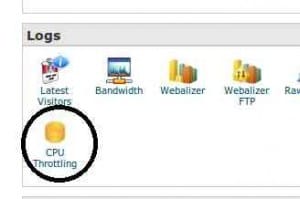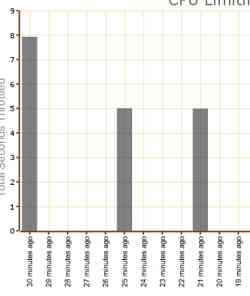A few days back I migrated this WordPress blog to Bluehost. I’d been using Go Daddy for over a year, but I grew increasingly frustrated by the slowdowns. Sometimes they happened at the same time every day. In addition, Go Daddy didn’t support mod_deflate or mod_gzip on its shared hosting plan. The last straw was when they downgraded my server from Apache 2.2 to 1.33, resulting in all sorts of weird .htaccess errors as my expiration tag declarations were shot to hell. To rub salt into my wounds, I had to upgrade to a delux plan just to view the error logs!
So I finally bit the bullet and ponied up $59.4 for a year’s worth of hosting at one of the best Bluehost deals sites on the net. I’d done as much research as possible, but I couldn’t get a definitive guide to which was better. So now that I’m settled into my new place, here’s the lowdown on which hosting plan is the best for a WordPress blog.
Blushost performance vs Go Daddy
The thing that really impressed me about Bluehost was that they throttle the CPU resources of accounts that go over the limit. Now this might seem like a bad thing to you, but it really ends up benefiting everyone. Since I can be sure that the sites of others won’t be eating up resources that are meant for me. Godaddy on the other hand had no indication of how many resources my applications were using. The transparency in Bluehost is amazing. Here’s how it looks in action:

You can choose to view the CPU throttling on an hourly, quarter hourly, or minute by minute basis. This allowed me to test which plugins were causing the problem because of the quick feedback. Go Daddy has nothing like this in their economy shared hosting plan.
As I mentioned above, I also got access to all the error logs which allowed me to identify a few more faulty plugins. Go Daddy didn’t give me this access and the help center guy told me I’d have to upgrade if I wanted to just take a look at what was causing the 503 Internal server errors.
Transferring WordPress from Go Daddy to Bluehost
One truly amazing thing about Bluehost is their temporary URL feature. When you migrate hosts, you need to redirect your DNS entries to the new servers. But before you take that final step, you want to be damn bloody sure your site is working perfectly. You want to preview it and test it in a production environment. But what do you type into your address bar when your domain hasn’t moved yet?
Bluehost makes this easy. When I purchased a new Bluehost account, I got a temporary URL along with the welcome mail. Clicking that, you can access your new hosting account exactly as if your DNS entries were already changed! Go Daddy has a feature like this, though you have to specifically turn it on, but the URL they give you doesn’t allow you to do everything on your site that you would normally do. With Bluehost, the temp URL can set cookies and all the rest. So I took my own sweet time making sure it was working precisely the way I wanted before taking the leap and changing the servers.
Installing WordPress itself was easy. Just a single click, choose the directory and it happens in seconds. When I did the same thing in Go Daddy, it took me half an hour at least with the message “pending installation” staring me in the face. There was no waiting with Bluehost. And when I set up a subdomain for my CDN requirements, it was ready almost instantly. No waiting period at all.
When I wanted to archive my site using Go Daddy’s file manager to transfer it off my account, I found that they only allowed 20 MB to be archived! A pittance. And with several hundreds of files, there was no way I was going to use FTP to transfer it out. So I had to rebuild from scratch. Luckily, with the temporary URL I faced no issues. Later when I tried to use the archive function on Bluehost, I didn’t find any size limitation.
It made me wonder why I put up with Go Daddy’s shoddy service all this time.
Speeding up WordPress on Bluehost
As I was trying this and that to reduce WordPress’s CPU load, I stumbled upon a fantastic way to cut the resource use by a full 50%. It’s called “FastCGI” and it’s disabled by default on Bluehost. Enabling FastCGI in the cPanel configuration reduced my CPU throttling to almost zero! I tested it out for half an hour and was astonished at the performance. There’s no downside to enabling it and the link explains what FastCGI is all about. Again, after doing some research, I found that Go Daddy also supports FastCGI but not for Economy shared hosting plans and they sure as hell don’t make it easy for noobs like me to find it.
I’m sure there are lots of other aspects of the these two hosting providers that I haven’t touched upon, but there were the ones that mattered to me. I hope it’s useful to someone who’s thinking of making a switch.

Nice article. cPanel is a great tool, especially when you have full access to all features. We use Host Gator for 5-6 years now and really like them. they even have great support…